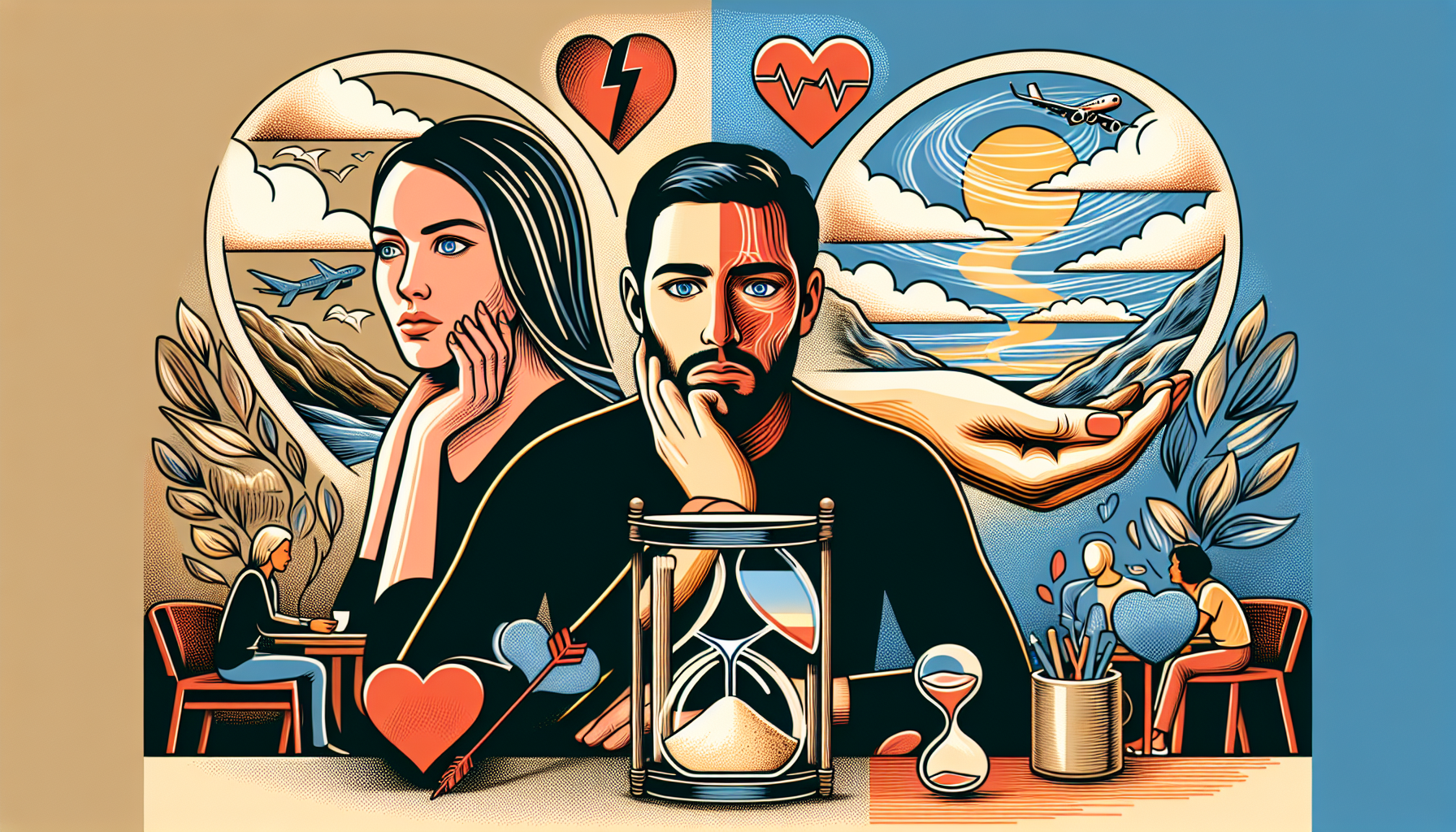
Imagine this scenario: You’ve been dating someone for a while, going on fun outings and sharing intimate moments. But at what point does dating transition into a full-blown relationship? It’s a question that many of us ponder, unsure of how to define this exciting new chapter. In this article, we will explore the intricacies of dating and when it officially becomes a relationship, helping you navigate the sometimes murky waters of love and commitment. So sit back, relax, and prepare to unravel the mystery of when dating truly crosses the threshold into a meaningful relationship.

Defining dating and relationship
Dating and relationships are two terms often used interchangeably, but they carry distinct meanings. Dating refers to the initial stage of getting to know someone, where two individuals spend time together and engage in activities to determine compatibility and shared interests. It is a period of exploration and discovery. On the other hand, a relationship denotes a deeper commitment and emotional connection between two people. It signifies a higher level of commitment, where individuals are exclusive and have a stronger sense of emotional connection.
The different stages of dating
1. Stage 1: Initial attraction and casual dating
The first stage of dating is characterized by initial attraction and casual dating. At this point, you are getting to know each other and are exploring the possibility of a deeper connection. The emphasis is on having fun, going on dates, and enjoying each other’s company without any expectation of exclusivity or long-term commitment. This stage allows you to assess compatibility and determine if there is potential for a more serious relationship.
2. Stage 2: Exclusive dating
After the initial stage, if both parties feel a connection and have a desire to move forward, the relationship may progress to exclusive dating. This stage signals a higher level of commitment, where both individuals agree to focus their romantic and emotional attention solely on each other. Exclusive dating implies that other romantic or sexual relationships with third parties are off-limits, demonstrating a growing emotional investment and commitment.
3. Stage 3: Becoming an official couple
The final stage of dating is becoming an official couple. This stage signifies a mutual agreement to enter into a more serious and committed relationship. It involves openly declaring the relationship to family, friends, and acquaintances, further solidifying the connection between both individuals. This stage often involves discussing long-term plans, shared goals, and making collective decisions as a couple.
Factors that indicate a transition to a relationship
Several factors can indicate a transition from casual dating to a more committed relationship. These factors include:
Open and honest communication
Open and honest communication is vital in any relationship. When both individuals feel comfortable sharing their emotions, thoughts, and expectations, it indicates a willingness to build a deeper connection and move beyond casual dating.
Commitment and exclusivity
Commitment and exclusivity are key indicators of a transition to a relationship. When both individuals agree to be exclusive and remove other romantic interests from the picture, it demonstrates a desire to invest more time and energy into the relationship.
Emotional connection and intimacy
The presence of an emotional connection and intimacy is another significant factor. When two people feel a strong emotional bond, support each other through both good and bad times, and are comfortable sharing vulnerable aspects of themselves, it suggests that a deeper relationship is forming.
Introduction to friends and family
Introducing your partner to friends and family is a significant step towards building a more serious relationship. This act signifies that you value your partner’s presence in your life and are ready to merge your worlds together.
Long-term plans and goals
Discussions about long-term plans and shared goals indicate a transition to a relationship. When both individuals envision a future together and actively work towards achieving their collective aspirations, it signifies a deeper level of commitment and investment in the relationship.
Signs that dating is not a relationship yet
While there are clear signs that dating has transitioned into a relationship, there are also signs that indicate the relationship is not yet defined. These signs may include:
Lack of communication about feelings and expectations
If there is a lack of open communication about feelings and expectations, it suggests that the relationship remains in the dating stage. When both individuals don’t discuss their desires and intentions for the future, it can create confusion and prevent the relationship from progressing.
Continued involvement with other people
If one or both individuals continue to be involved with other people romantically or sexually, it indicates that the relationship is still in the dating stage. Exclusive commitment and the willingness to focus solely on each other are not present, suggesting that a transition to a relationship has not yet occurred.
Limited emotional investment and commitment
When emotional investment and commitment are limited, it suggests that the relationship is not yet defined. If one or both individuals are hesitant to fully invest emotionally or show a lack of commitment, it indicates that further exploration and development are needed before transitioning to a relationship.

The role of time in determining a relationship
The process of transitioning from dating to a relationship is not solely dependent on time. Relationships develop at different paces, depending on various factors such as individual personalities, past experiences, and the compatibility of both individuals. There is no set timeframe for a relationship to develop, as each couple’s journey is unique.
It is essential to approach the development of a relationship with patience and allow it to progress naturally. Rushing into a relationship without a solid foundation can lead to misunderstandings, conflicts, and an eventual breakdown of the connection. Taking the time to build trust, emotional intimacy, and shared experiences is crucial before fully committing to a defined relationship.
Navigating the conversation about defining the relationship
At some point, it becomes necessary to have a conversation about defining the relationship. This conversation involves discussing expectations, intentions, and the desire to move forward as a couple. Here are some tips for navigating this conversation:
Importance of discussing expectations and intentions
It is crucial to discuss expectations and intentions openly and honestly. Both individuals should express their desires for the relationship, including their visions for the future, level of commitment, and exclusivity. This conversation ensures that both partners are on the same page and can make informed decisions about the next steps.
Choosing the right time and setting
Selecting the right time and setting to have the conversation is essential. It should be a relaxed and calm environment where both individuals feel comfortable expressing their thoughts and emotions. Timing is also crucial; it is best to have this conversation when both parties are emotionally available and receptive.
Being open to different outcomes
During the conversation about defining the relationship, it is essential to remain open to different outcomes. Each person may have a different perspective on the relationship’s direction, and it is crucial to listen, understand, and respect each other’s viewpoints. Being open-minded can lead to a more productive and mutually satisfying conversation.
Challenges in transitioning from dating to a relationship
Transitioning from dating to a relationship can come with its challenges. Here are a few common hurdles that individuals may experience:
Fear of commitment or loss of independence
Some individuals may struggle with the fear of commitment or the fear of losing their independence when entering into a defined relationship. It is important to address these fears openly and honestly, ensuring that both individuals feel comfortable and secure in their decision to commit.
Differences in the desired level of commitment
Differences in the desired level of commitment can pose challenges when transitioning to a relationship. One partner may be ready to commit fully, while the other may prefer to take things slower. It is crucial to have open discussions and find a middle ground that both partners are comfortable with.
Navigating potential conflicts and disagreements
As the relationship develops, conflicts and disagreements are inevitable. Learning to navigate these challenges and communicate effectively is essential for a healthy relationship. Both individuals must be willing to work through disagreements, find compromises, and maintain open lines of communication.
The benefits of being in a defined relationship
Being in a defined relationship offers several benefits. These benefits include:
Emotional security and stability
A defined relationship provides emotional security and stability. Both individuals can rely on each other for support, companionship, and emotional connection, creating a sense of safety and comfort.
Increased trust and deeper connection
As the relationship deepens, trust and connection naturally grow stronger. Being in a defined relationship allows for greater vulnerability, leading to a deeper emotional bond and intimacy between partners.
Shared goals and collective decision-making
A defined relationship involves shared goals and collective decision-making. Partners can work together towards common aspirations, supporting each other’s dreams and actively building a future together.
Navigating the uncertain gray area
Sometimes, individuals find themselves in an uncertain gray area between dating and a defined relationship. It is important to determine personal readiness for a committed relationship and be honest with yourself about your desires and intentions. While enjoying the present moment is crucial, it is equally important to keep an eye on the future and ensure that both individuals are heading in the same direction.
Conclusion
In conclusion, there is no definitive answer to when dating officially becomes a relationship. The transition depends on various factors unique to each couple. However, open communication and mutual agreement are crucial elements in defining a relationship. By discussing expectations, intentions, and desires, couples can navigate the dating process with clarity, ensuring a solid foundation for a mutually satisfying and committed relationship. Remember, there is no rush—take the time to nurture and build the connection, and the transition will happen naturally when both individuals are ready.




